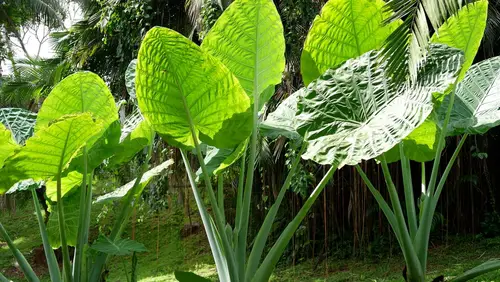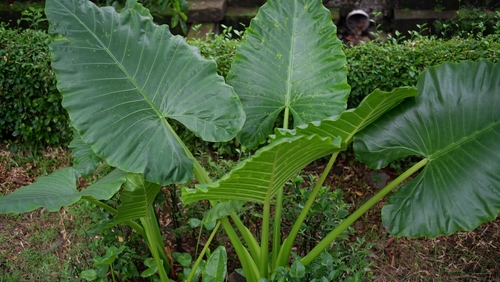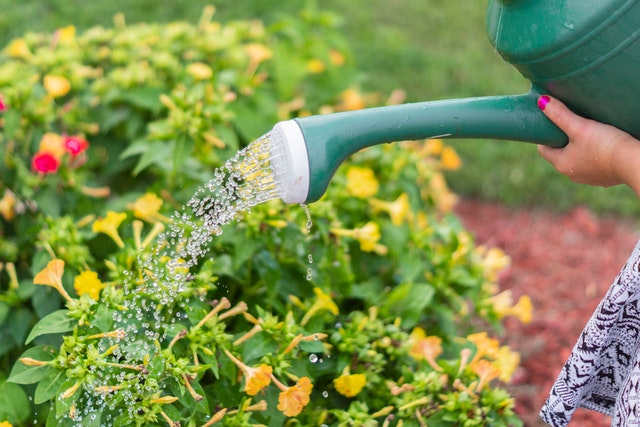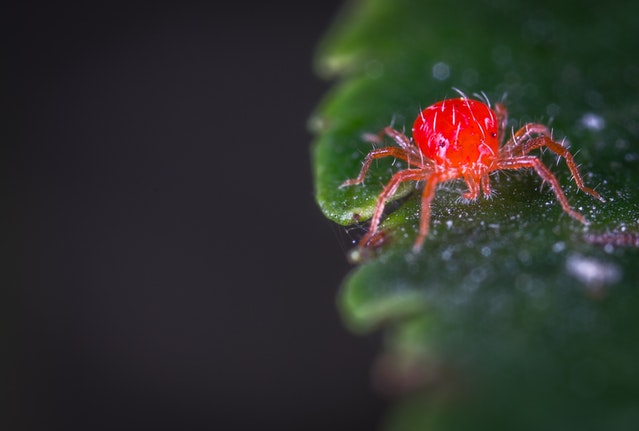Tropical plants won’t stop mesmerizing us with their unique appearance and exotic features. And variegated odora is a valuable member of this family.
Adding this plant to your home collection lets you have a glimpse of tropical flora in your home garden. This plant is well-known for its variegated leaves, which make its appearance extremely beautiful and different from all other tropical plants.
Related posts:
- Calathea Yellow Fusion Plant, Grow & Care Guide 2022
- Anthurium Crystallinum Plant, Grow & Care Guide 2022
- Amphioxus Begonia Plant, Grow & Care Guide 2022
What Is Variegated Odora?

The full name of this plant is Alocasia Odora Varigata. It falls into the category of unique and rare tropical plants. It belongs to the araceae plant family with other similar plants such as the Philo Jungle Boogie.
Also, it is not the only plant that carries the Alcoasia title, as there are more than 80 different plants that hold the same title.
As the name suggests, the plant has obvious creamy variegation over its leaves. So, you can easily recognize the plant just by the creamy spots on the leaves’ surface.
One of the best things about the appearance of this plant is that you can never find two of the same variegated pattern. Each plant has its own one-of-a-kind variegated leaves. The variegated odora plant is commonly known as the elephant ear plant.
Classification and Origin
Variegated odora is native to the tropical rainforests of Southeast Asian countries. The tropical areas of Australia are a natural habitat for this plant too. Variegated odora on both continents are also home to variegated odora. But the plant is easy to cultivate and maintain in different environments all over the world.
The Features of Variegated Odora
This plant is famous for its beautiful variegated creamy spots. It is also extremely popular among home gardening enthusiasts due to its easy maintenance and all-year-round growth.
1. Height
If you take good care of this plant, it will only take an average of 3 months to reach its mature height and width. The average mature height of variegated odora ranges between 2 and 8 feet. So, the largest plant of this type can reach nearly 2.5 meters in height. As for the width, a grown variegated odora plant is 4 feet wide.
2. Flowers
Variegated odora is not famous for its flowers. Its foliage is the secret to its beauty, but there are flowers blooming only during spring. Its flowers have a pleasant fragrance. The spadix and spathe of these flowers are not of a bright color, as they are always pale.
3. Leaves and Stems

The leaves give this plant its different and outstanding appearance. Creamy or white variegated spots on the leaves’ surface add to the plant’s individual character.
The spot pattern is not the same on each leaf. As for the size, the leaves are large and thick. You can find some resemblance to the shape of a heart. The stems of this plant are strong and thick.
4. Evergreen
This plant is naturally evergreen. This means that every day of every season, the leaves of your variegated odora will remain flourishing. So, there would be no fading and falling leaves in the fall or summer like many other plants if you take good care of it.
5. Toxicity
Variegated odora is not a safe plant to eat. It is poisonous and may cause serious side effects such as inflammation and swelling in various body parts. This includes the mouth, throat, and tongue. It is important to place the plant far away from the reach of children and furry friends.
Basic Care of Variegated Odora
Variegated odora is not challenging or demanding to care for. But there are some basic requirements that must be provided to make it thrive. The ideal temperatures, light, and water will encourage the plant to grow well and quickly.
1. Size and Development
Growing variegated odora is easy when you provide the right environment. Within 90 days, the baby plant can mature and decorate your home garden with its impressive variegated foliage.
2. Light Requirements
This plant needs bright natural light, but direct exposure to sunlight will not allow it to grow properly. You can, however, expose it a little bit to mild direct sunlight, especially if the plant has bigger white patterns.
Mild sunlight is usually right after sunrise or before sunset. You can use your curtains to allow sunlight to reach the plant without being too direct and too tough on the leaves.
3. Watering Requirements

Constant watering is essential for maintaining the health of this plant, but there is no need to drown it. You need to keep your variegated odora mildly moist. You can use your finger to feel the soil and judge its need for another round of water.
4. Soil Requirements
Well-drained soil that is more of an acidic nature is a great option for growing variegated odora. You need a potting mix with pH levels ranging between 5.5 and 7.5.
Proper drainage is essential for the healthy growth of this plant and reduces the chance of attracting pests and bacteria. The ideal soil should be somewhere between heavy and sandy potting mix.
5. Humidity and temperature
Variegated odora can tolerate some levels of heat and humidity due to their tropical nature. Cold air will not lead to plant’s thriving any time soon. So, it is recommended to keep the indoor temperature over 60 degrees Fahrenheit (15 degrees Celsius). Make sure that the temperature doesn’t exceed 30 degrees Celsius.
A humid atmosphere is necessary for this plant to grow fast and healthily. If you can’t keep humidity levels near 70 percent, you can get a humidifier to avoid dryness. If you can’t afford the artificial humidifier, you can always use the pebble tray trick.
6. Drought and disease resistance
Variegated odora does not stand drought, as it needs moderate moisture. It also can’t tolerate a dry atmosphere and lack of hydration. So, it is necessary to maintain a balance between both options.
This plant gets different types of infections, including bacterial and fungal ones. Rot is another disease that threatens the health of variegated odora roots and stems.
7. Fertilizing
Liquid fertilization is the best option for this plant. It should not be used constantly. You can fertilize your variegated odora only in the summer or spring.
These are the growing seasons when the plants can benefit from the nutrients in the fertilizers. It is important to spray the liquid away from the roots, as it can damage the roots.
8. Repotting

Repotting is only required once every year. All you need is to bring a larger pot and a new potting mix with the same soil requirements. Then, move the plant to its new home. A pot made of natural and breathable materials can make the plant even healthier.
9. Pruning Requirements
Pruning variegated odora is not a challenge. You can do this a couple of times every year. The best time for this process is during spring or at its beginning. You shouldn’t do this in winter, as the plant goes into a state of dormancy.
How to Propagate Variegated Odora
When it comes to propagating variegated odora, the best time for it is during the growing season. So, you can only perform this process in the summer or spring. If you want to hit two birds with one stone, you can do repotting and propagation all at once.
Proper propagation of this plant must be done through cutting the plant into several rhizomes. Dividing instead of stem cutting is the right method for making more generations of variegated odora.
Step 1
You need a fully-grown plant to divide it into the growing rhizomes. Before making any cuts, you must remove the residues of the potting mix. These steps enable you to see the plant’s clumps clearly, which are the right areas to divide.
Step 2
After cleaning the plant, you can make the divisions. A grown plant can give you 2, 3 or even more rhizomes. You can decide based on your need for new plants of this kind.
Step 3
Once you are done with division, you need to keep the rhizomes apart from each other. Make sure to plant rhizomes that have sufficient roots. This way, you can guarantee that the new plant will be supported properly.
Step 4
It is time for the freshly cut rhizomes to get to their new homes. Make sure they are correctly positioned to stand upright. The potting mix should follow the plant into the new home.
Step 5
To guarantee proper positioning of the plant, you need to gently pack the potting soil around its roots. This way, the plant will remain standing and won’t fall when it is watered.
Common Problems: Caring for variegated odora
Varigated odora does not take much effort to care for. If you grow it under the right environmental conditions and requirements, you will see fast and satisfying results.
If you want to enjoy its attractive and evergreen foliage, you should maintain appropriate heat levels and humidity and avoid over-watering. Here is an overview of the most common problems that might face you while growing the plant.
1. Pests

Mealybugs and spider mites are the most common pests attacking variegated odora. If you are taking excellent care of the plant, you will significantly reduce the chance of attracting them to the leaves and stem.
If you spot the insects, you need a reliable insecticide. Remember to get an eco-friendly liquid or make one at home.
You can use diluted neem oil to spray the leaves. Then, using a clean piece of cloth, you can softly wipe the surface of the plant to get rid of the insects. Keeping the plant clean from dust helps in preventing the accumulation of pest eggs all over the leaves and stem.
2. Diseases
Different types of fungi and bacteria can infect variegated odora and lead to its deterioration. Crown rot, root rot, and xanthomonas are a few examples of the diseases affecting the wellness of this plant. The golden rule for avoiding many types of infections is moderate and need-based watering.
Excess water is a perfect environment for bacteria and fungi to thrive and multiply. The most obvious sign of infection in this plant is color change. For instance, the plant surface will get yellowish or brownish spots instead of its normal color shade and natural variegation.
3. Yellow leaves
When your plant starts developing yellow leaves, it can be an indication of illness or improper care. Yellow leaves can mean that the plant is suffering from drought. Also, it can mean that the plant is exposed to sunlight more than it should. So, yellowish leaves can be a result of sunburn from harsh rays.
Outro
One of the most beautiful and easy-to-care-for tropical plants is variegated odora. Its white and creamy variegations add more beauty to its bright green leaves. The plant needs moderate levels of water and high humidity, which are essential for healthy thriving.
Don’t forget to keep your gorgeous plant clean and avoid placing it near your kids and pets, as it is poisonous.
Frequently Asked Questions
What is Variegated Alocasia Odora?
It is a plant that belongs to the tropical family, which thrives in the rainforests of the Asian Southeast and Australian forests as well. Variegated odora is a beautiful and evergreen plant that is famous for its variegated large leaves. Its leaves are shaped like hearts, which adds more beauty to the plant’s appearance.
How do you treat variegated alocasia odora?
Infected plants need a thorough inspection to detect the presence of pests or insects. This is how you can start removing the bugs along with their nests. You can use insecticides or organic sprays made at home, such as neem oil spray.
You can also wipe the plant surface with a damp cloth that contains a mix of organic soap and water to remove pests.
How do you take care of a variegated odora plant?
Taking care of variegated odora is not difficult. Once you set the proper atmosphere, the plant will grow really fast and will become big in a maximum period of three months.
It needs reasonable watering and high humidity with warm temperatures all year long. It is important to keep it where it can get bright but indirect sunlight.

Hey, I’m Lisa and I’ve been an avid gardener for over 30 years. I love writing, talking and living in the garden! Feel free to connect with me on my socials below
